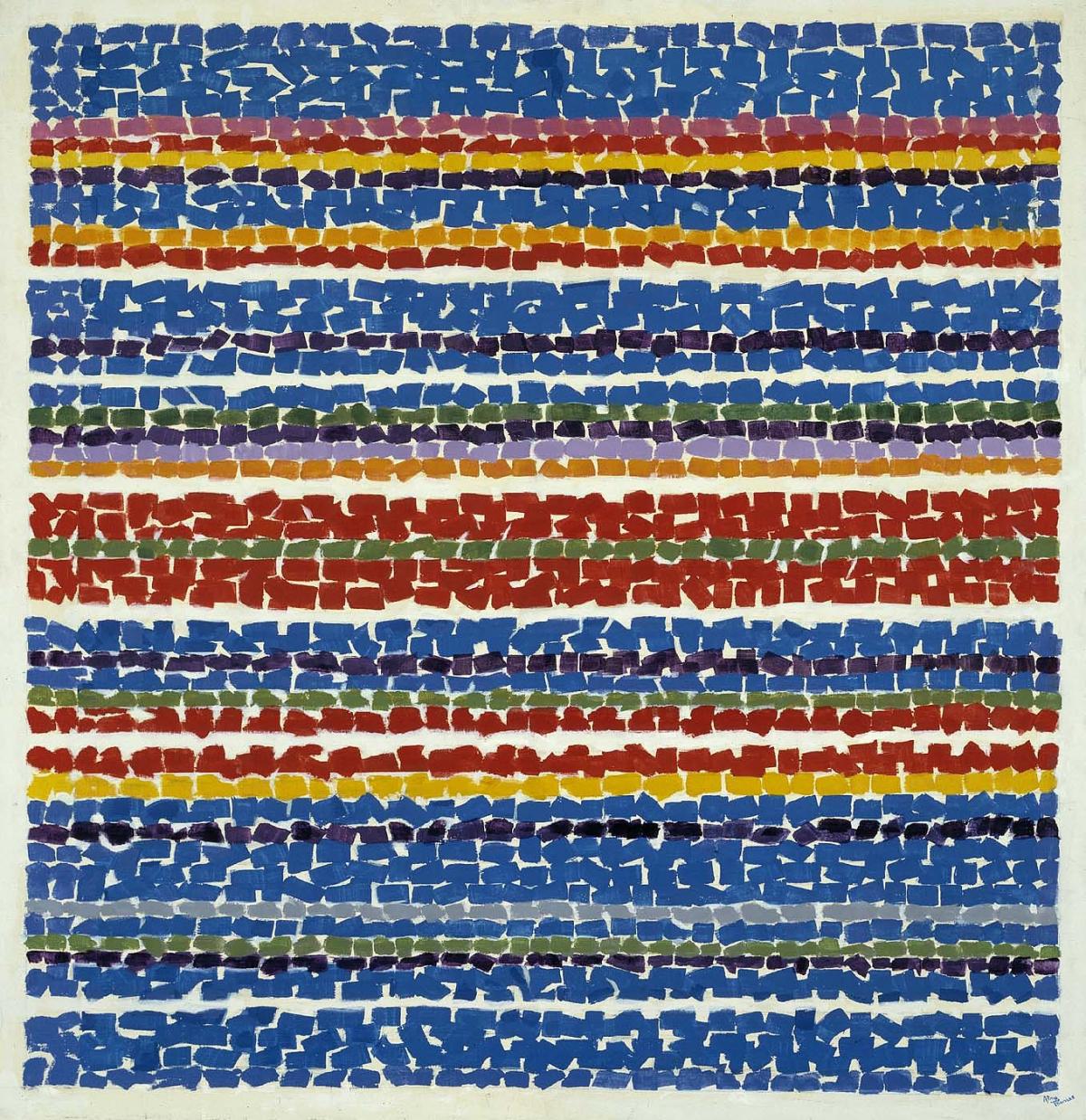
As the first painting of Alma Thomas’s to enter the museum’s collection, Light Blue Nursery holds a special place in the Smithsonian American Art Museum’s history. This painting was a favorite of Joshua C. Taylor, SAAM’s director from 1970-1981, and was proudly displayed in the director’s office before being sent on loan.
A staple in the Washington DC art scene, Thomas embraced her longstanding ties to the nation's capital. A concerted effort was made by the museum to acquire more of Thomas's works, by both gift and purchase. Thanks in part to warm relationships Thomas had with staff members at SAAM—specifically with Taylor and curators Adelyn Breeskin and Jacob Kainen—the artist chose to bequeath her personal collection to the museum, making SAAM the largest public collection of Thomas's paintings in the world.
The chromatic impact of Light Blue Nursery is dramatic. Small blocks of irregularly configured primary colors dance across a bright white surface in horizontal rows that echo the ordered energy of a formal garden. Secondary and tertiary hues—pinks, purples, and greens—reflect Thomas’s conviction that she could play with perception and optical interaction in images drawn from her visual experience of the natural world. Although seemingly constructed of spontaneous strokes of the brush, the forms, like the colors, are thoughtfully calibrated.
According to Melissa Ho, SAAM’s curator of twentieth-century art, Light Blue Nursery reminds her of going to the plant nursery and seeing brightly colored plants lined up in these neat rows: “We know that Alma Thomas was an avid gardener. Her studio was actually at the back of her house in the kitchen, and the view from the kitchen window was onto the flower garden that she planted. She was able to look out the window and just take in the beauty of the abstract forms, of color and line and form. When you get up close and you look at these rows of brushstrokes and color, you can see all the different multiple touches of her hand.”
Ho notes, "Alma Thomas distinguishes herself from some other Washington, DC, painters who work without brushes, soak color directly into their canvas, and use masking tape to make a very hard line. Alma Thomas keeps a human hand in there and, in fact, really amplifies it because she doesn't just do one touch of the brush, she does multiple touches, using different degrees of transparency the stripes are not uniform. There's a real sense of liveliness that's created by this variety. She's altering the direction, the amount of pressure, the sense of movement. I love the colors in this painting. I think they’re particularly playful. It reminds me of looking at a box of crayons.”
This story is part of a series that takes a closer look at the special exhibition Composing Color: Paintings by Alma Thomas and artworks with material drawn from texts and an audio guide created for the exhibition.



















